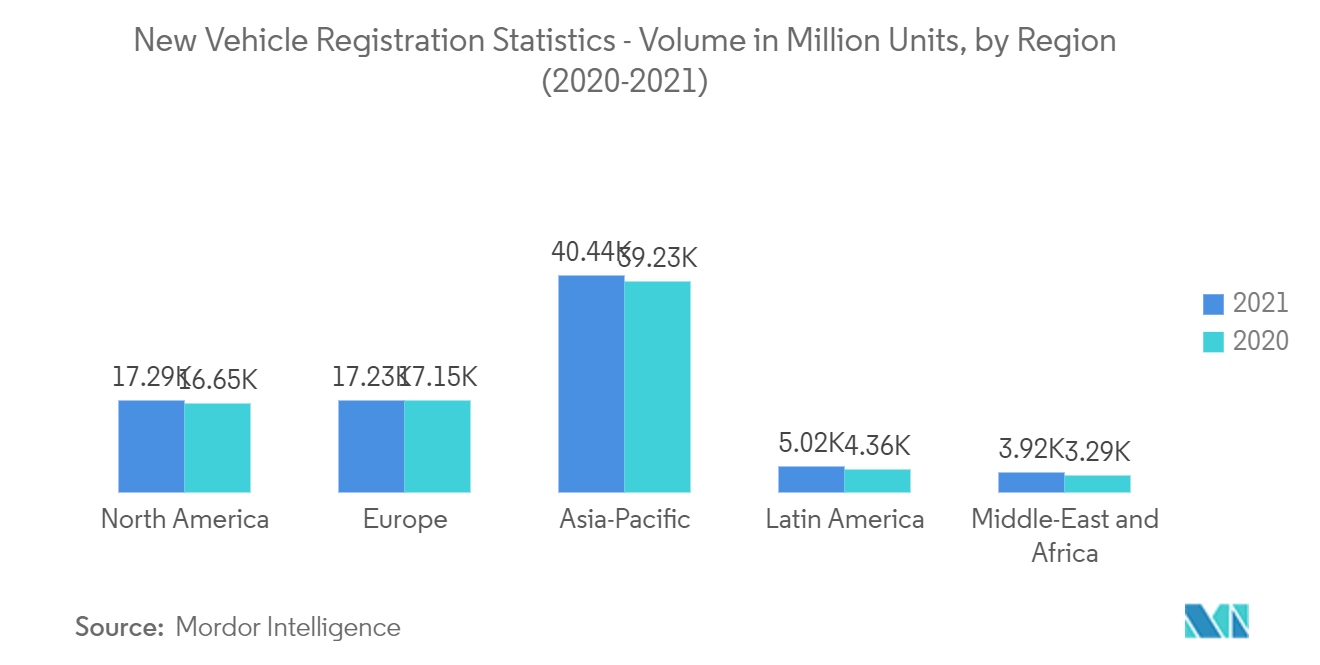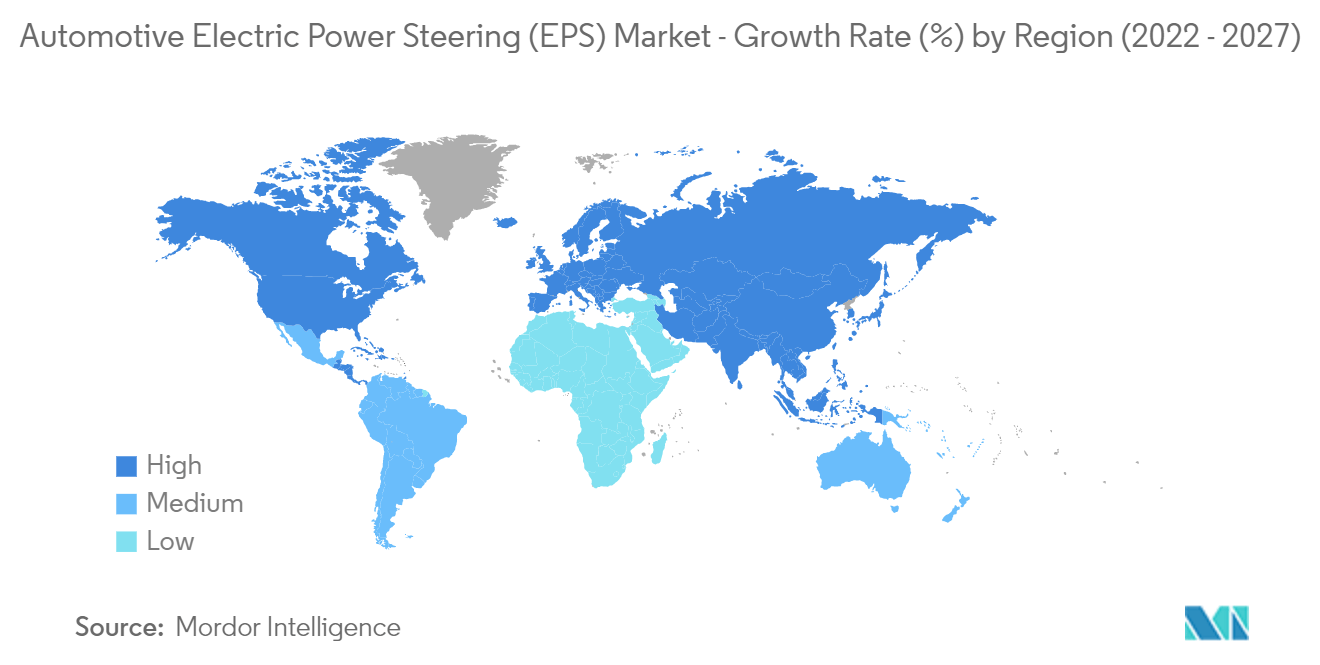Market Trends of Automotive Electric Power Steering Systems Industry
This section covers the major market trends shaping the Automotive Electric Power Steering Systems Market according to our research experts:
Government Initiatives and Growing Emphasis on Safer Automotive Systems are Driving the Market
On an average, globally, about 1.24 million people die in road accidents each year, half of whom are vulnerable road users, such as pedestrians and motorcyclists, while the other half die because of side-impact accidents. According to the World Health Organization (WHO), 80% of cars sold in the world are not compliant with the main safety standards. Only 40 countries have adopted the full set of the seven most important regulations for car safety.
A significant increase in the number of accidents has also encouraged end users to adopt better safety systems. Improvements in roadway and motor vehicle designs have steadily reduced injury and death rates in all the first world countries. However, the accident rates are still higher in some developing countries, and governments are focusing on implementing stringent safety norms and supporting the adoption of various subsystems in the vehicles.
OEM are integrating advance sensor in the EPS in order to improve its overall performance and safety of the vehicle. The use of several steering sensors in electric power steering (EPS) helps to provide the driver with extra safety benefits. Furthermore, the adoption of stringent fuel efficiency standards by government and international safety measures, are seen as major drivers for the expansion and development of advanced steering systems (such as EPS), which make extensive use of steering sensors. In September 2021, thyssenkrupp has invested EUR 6.2 million into a new automotive R&D Competence Center in Budapest to develop electromechanical power steering systems that can co-operate with a variety of driver assistance and self-driving systems.
Several countries throughout the world have enacted strict vehicle pollution and fuel economy rules. Fleet-level requirements have been adopted by regulatory authorities such as the National Highway Traffic and Safety Administration (NHTSA) in the United States, the International Council on Clean Transportation (ICCT) in Europe, and other organizations. These standards establish an average emission level that car makers must adhere to.
These requirements have forced automakers to invest more in fuel-efficient steering technology like electric power steering. To cater these requirements, players are collaborating and co-developing advanced steering systems. For instance, In March 2022, Thyssenkrupp and NSK Ltd. (NSK) agreed to explore a joint venture between Thyssenkrupp Automotive and NSK's steering division. The MoU calls for a technological and strategic alignment between ThyssenKrupp's automotive business with NSK's steering division.
Considering these developments and prominent factors demand for EPS is anticpated to hold high potential during the forecast period woing rising sales of passenger and commercial vehicles across the globe.

Asia-Pacific Dominated the Global Market
Asia-Pacific dominates the market, and it is expected to witness the same trend over the forecast period, with China dominating the market, followed by India and Japan.
In April 2022, Chinese passenger car production reached 996,000 units with sales registering 965,000 units. This accounts the downfall of 41.9% and 43.4% respectively in production and sales compared to the previous year. In 2022, from January to April, passenger car production also decreased with 2.6% year-on-year registering 6,494 million units. The country is characterized by the presence of a large number of local and global players. Global players generally enter the Chinese market through joint ventures with regional companies. For instance, Nexteer Automotive entered an agreement with Dongfeng Motor Parts and Components Group to create Dongfeng Nexteer Steering Systems (Wuhan) Co. Ltd. This new company will deal with the production of single-pinion assist electric power steering (SPEPS) systems.
The growing trend of vehicle electrification is a significant factor driving the automotive steering sensors market. As a result, automotive manufacturers are increasingly collaborating with sensor manufacturers to suit the needs of their consumers. Additionally, lower system prices have also aided in the rapid adoption of modern sensors and semiconductor products in China which will positively impact the target market growth. Companies operating in the supply and distribution of steering sensors are looking forward to their mass expansion in other opportunity regions. Several OEMs are partnering with carmakers to bring enhanced products. For instance, In July 2021, China Automotive Systems, Inc., a major provider of power steering components and systems in China, stated that it has reached the OTOP (Off Tool Off Process) phase of new steering development for Alfa Romeo.
India is an emerging economy where EPS implementation in passenger cars is growing rapidly, owing to its advantages, such as no hoses or fluids required in the steering system, thereby, reducing the repair and maintenance costs. Currently, more than 30% of the passenger cars are running with EPS technology in India, and the technology is likely to be implemented in the majority of the budget passenger cars during the forecast period. Companies involved in the supply and distribution of steering sensors are looking forward to widespread expansion in other potential markets. Several OEMs are collaborating with automakers to improve their goods. Sensor items have also been continually upgraded as technology has advanced. For instance, In January 2022, as a part of the consolidation of its operations in the Indian market, ZF acquired a majority stake in the Rane TRW Steering Systems joint venture with the Rane Group. The new joint venture will operate under the name of ZF Rane Automotive India and produces electric steering systems for commercial vehicles.
Considering these potential development and factors, demand for automotive electric power steering is anticpated to hold high potential in the Asia-Pacific region.


